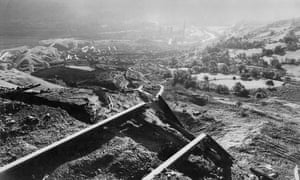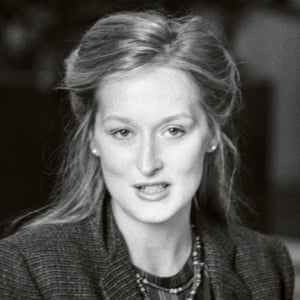
The photographer Peter Johns, who has died aged 86, brought a distinctive artistic approach to his work for the Guardian and other newspapers over a period of some 20 years. He was part of a new wave of British photojournalists who emerged in the 1960s and 70s, including Don McCullin, Ian Berry, Philip Jones Griffiths and Neil Libbert, yet was never part of the competitive Fleet Street pack.
One of his biggest stories was his series on the Aberfan disaster in 1966, in which 140 people were killed, 116 of them children. Here, he didn’t just follow the press into the village, but climbed the mountain high above to get his stunning and evocative photographs of the collapsed coal tip that engulfed a school, farm and several houses.
Peter’s work for the Guardian from the 1960s onwards covered all areas of photojournalism – and always in black and white. He photographed a wide range of news events including marches, demonstrations, elections and strikes with his typical artistic and technical flair. However, he also tackled __more challenging subjects – photo essays on drug addiction, poverty and homelessness, for example – with great sensitivity. A naturally modest and thoughtful man, he became known as a gentle observer.
I first met him in the 1970s when freelancing at the paper, and I always looked up to him. When checking the office diary Peter would look for anything to do with the arts, music and especially the theatre. Portraits were another passion; his photographs of Rudolf Nureyev, Tennessee Williams, Meryl Streep and John Osborne stand out, but his personal favourite was that of the great French photographer Henri Cartier-Bresson – a man who famously hated being photographed.

He was once arrested at a demonstration in Trafalgar Square when a young policeman thought he was resisting arrest, but he was actually only reaching for his press pass. Photographs of the incident from colleagues attending the demo were produced in court and he was freed. He dined out on the story for weeks.
Despite being a great storyteller, Peter was a modest man and never shouted about his achievements. He was also an avid artist, drawing constantly, and he brought that sensibility to his photography. Often he used his favourite Leica camera, and made his own prints at home. He said: “Working mainly in monochrome, there must be an awareness of dark against light and vice versa, without the novelty of colour.
“Unlike the painter, who arranges the composition within the space of his canvas, the photographer must compose within the limits of his lens and viewfinder and select a suggestion, an idea, an interpretation – with very few second chances.”
Born in Swansea, Peter was the son of Lucy, a costume maker and musician, and Joseph Johns, a butcher. Joseph supplied food to ships in Swansea, so there was always plenty of meat and fish on the table. After attending Dynevor grammar school, Peter studied illustration at Swansea College of Art, where he also obtained an art teaching qualification.

His love of photography emerged as a teenager when an aunt gave him a couple of cameras – first a Rolleicord and later the superior Rolleiflex. He soon started taking the wonderful graphic images that became his signature.
From 1950 he began work at the South Wales Evening Post and the Herald of Wales, designing advertisements and illustrating news stories in the paper, while also heading out to take photographs when needed.
It was a series of distinctive photographs of Welsh miners that he took on an assignment with the journalist Alan Road, who was to go on to work for the Observer, that brought him to the attention of picture editors at that paper and the Guardian.
In 1961 he moved to London as a freelancer and four years later was hired as a staff photographer at the Guardian (one of only three full-time photographers). He stayed there until 1981.
As well as his photojournalism, Peter taught an evening class in photography and took production photographs for the Greenwich theatre in south-east London. In 1979 he had an exhibition of his own work there.
He was included in Four Artists and a Photographer at the South London Art Gallery (1973) and also showed at the Photographers’ Gallery, London, and Photogallery, St Leonards-on-Sea, East Sussex.
He loved teaching and taught his students that “the camera is essentially a notebook for recording instances in time and space, but above all for recording life as it presents itself. Photographing people, places, events – anything – must, for my part, be done without being contrived. Pictures are all around us, waiting to be taken. The difficult part is recognising them but the secret is not just to record but to select. The obvious cliche is avoided and instead a meaning or reason is conveyed without sacrificing realism.”

Peter married Valerie May in 1955 and they had two daughters, Susie and Lisa. In 1981 Peter, Valerie and Lisa upped sticks to the Algarve in Portugal, where they set up and ran a photography workshop and a small country restaurant with a gallery space.
In 2000 the family returned to the UK, settling in Hastings, East Sussex, where Peter concentrated on documentary and landscape photography, including, for the first time, some in colour. He showed some of his new work at Rye Art Gallery in 2002 and two years later had a retrospective exhibition at Whitstable Museum and Gallery.
In 2006 he had another retrospective at the Guardian, Kings Place, London, and donated his entire archive to the Scott Trust Foundation.
Valerie died in 2014. Peter is survived by Susie and Lisa, and four grandchildren, Stella, Josh, Lillie and Edith.
• Peter Norman Johns, photographer, born 4 October 1930; died 11 March 2017